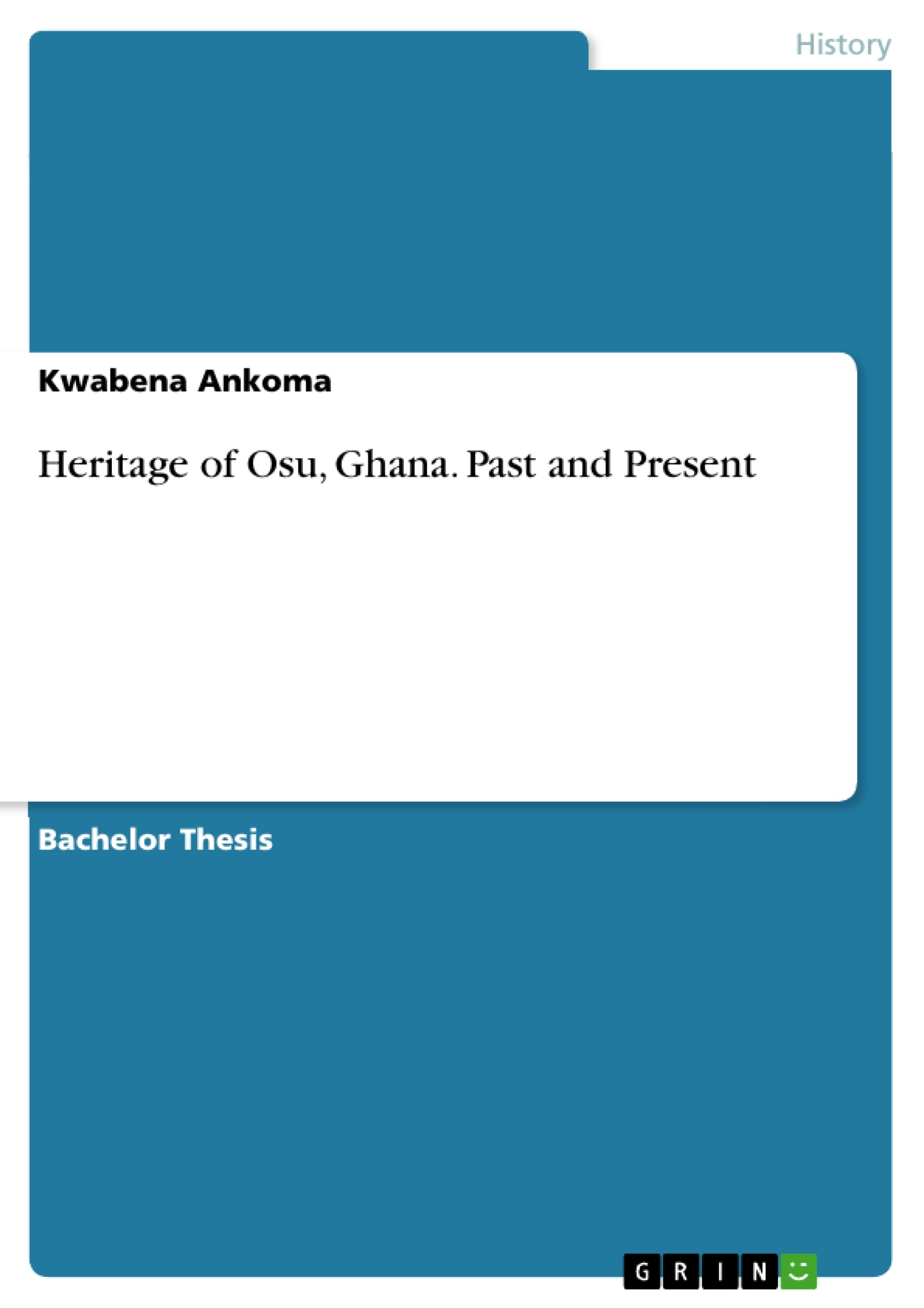The town of Osu, being a Danish colonial town in the Greater Accra Region of Ghana, has a rich cultural heritage. The heritage of Osu can be traced from its contact with the Danes which led to the adoption of the name, Danish Osu or Danish Accra. Their heritage has however grown from being a colonial town into a contemporary urban settlement which is noted as one of the most vibrant places in Accra with its night life and massive inflow of tourists. This apparent rich history of Osu has called for the study into the heritage of Osu, as heritage is believed to be all aspects of culture that are part of a society.
The study sought to establish among others what tangible sites have existed in the past and what have propelled their existence presently. Particular reference was made to the Christianborg Castle, Richter Fort, Nii-Okantey Shikatse We, Osu Salem School and Frederichs Minde which were all developed in the Danish era. The study also covered other heritage sites such as the Danquah Circle in Osu, the Osu Ebenezer Presbyterian Church, Osu Cemetery and the State
House.
The study furthermore brought into light the distinction of the economics, governance system and education in Osu in terms of how these features were in the past and how they are presently. At the end of the study, findings (primary and secondary sources) established that the heritage of Osu have been propelled by culture contact and globalization and with the implementation of sustainable development the heritage of Osu will be properly protected for an increasing tourists’ consumption.
Recommendations were made for further research into the intangible heritage of Osu as well as establish the divergent cultural traits between those living around the "Oxford Street" and those in the traditional quarters.
Table of Contents
- CHAPTER 1 – INTRODUCTION
- 1.1 Background to the Study
- 1.2 Study Area
- 1.3 Research Problem
- 1.4 Research Aim
- 1.5 Research Objectives
- 1.6 Limitations of the Research
- 1.7 Importance of the Research
- 1.8 Research Methods
- 1.8. a Primary Sources
- 1.8. b Secondary Sources
- 1.9 Research Questions
- 1.10 LITERATURE REVIEW AND A CONCEPTUAL FRAMEWORK
- 1.11 Organisation of Study
Objectives and Key Themes
This long essay explores the rich cultural heritage of Osu, a Danish colonial town in the Greater Accra Region of Ghana. The research aims to understand the evolution of Osu's heritage, from its colonial origins to its current status as a vibrant urban center. The essay examines the tangible sites that have shaped Osu's history, including Christianborg Castle and other structures from the Danish era, as well as contemporary landmarks like the Danquah Circle and the Osu Ebenezer Presbyterian Church. The study also investigates the impact of cultural contact and globalization on Osu's economic development, governance systems, and education.
- The historical evolution of Osu's heritage from its colonial past to its contemporary status.
- The role of cultural contact and globalization in shaping Osu's heritage.
- The tangible and intangible heritage sites of Osu.
- The influence of heritage on Osu's economy, governance, and education systems.
- The importance of sustainable development in protecting and preserving Osu's heritage.
Chapter Summaries
Chapter 1 introduces the background of the study, focusing on the rich cultural heritage of Osu. It outlines the research problem, objectives, and methods employed. The chapter also explores the importance of the research and its limitations. It delves into the concept of heritage, defining its various aspects, and discussing its significance in society.
Keywords
This essay focuses on the heritage of Osu, a Danish colonial town in Ghana. Key themes include cultural heritage, colonialism, globalization, tangible and intangible heritage, economic development, governance systems, education, and sustainable development. The study draws on primary and secondary sources to analyze the evolution of Osu's heritage, examining the impact of cultural contact and globalization on this vibrant urban center.
- Quote paper
- Kwabena Ankoma (Author), 2014, Heritage of Osu, Ghana. Past and Present, Munich, GRIN Verlag, https://www.grin.com/document/889371




